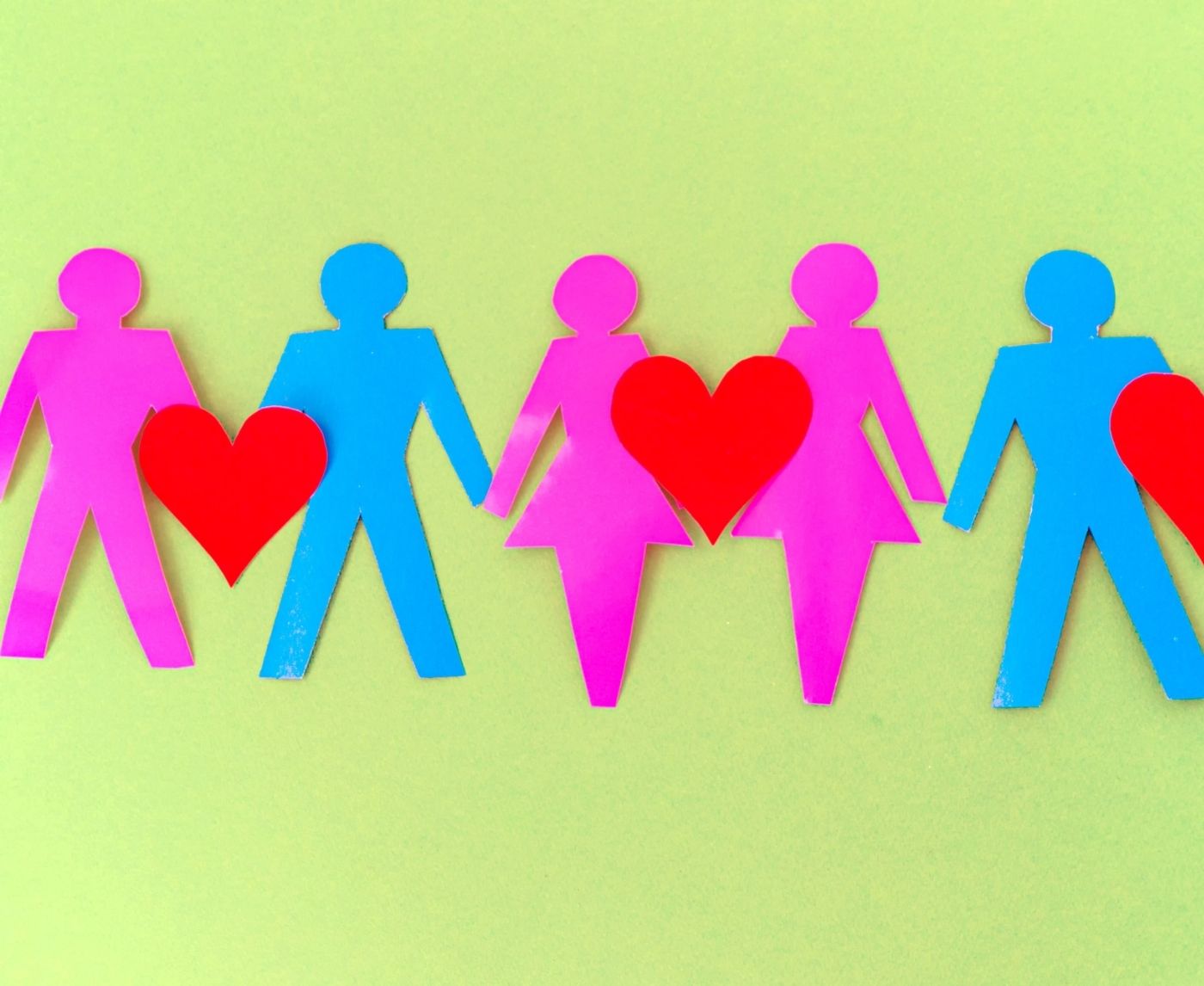Quick Answer: Polyamorous people may have more exposure points, but they often practice safer sex, test more frequently, and communicate boundaries more clearly than monogamous people. Risk is about behavior, not labels.
This Isn’t Just Razor Burn, And Here’s Why It Matters
If you’re here, chances are you noticed something. A bump. A rash. A weird discharge. Maybe a flu that doesn’t feel like the flu. When you’re polyamorous or non-monogamous, those symptoms come with an extra layer: fear that someone will think you’ve been “irresponsible.”
The truth? STDs don’t care about your relationship style. But stigma sure does.
Let’s start with symptoms, because most people don’t Google "relationship structures and STI epidemiology" at 3AM. They Google: “do I have herpes or just chapped lips?” “burning after sex polyamory,” or “does gonorrhea have a smell.” Symptoms are the funnel, and for many poly folks, they also trigger self-doubt.
Here’s the thing: symptoms don't confirm a lack of care. They confirm you're human. A sore throat after oral sex? Could be strep, could be HSV-1. A red patch on your thigh? Might be irritation, or syphilis. The only way to know is to get tested. And in poly circles, many already do. Frequently.

People are also reading: Can Doxycycline Prevent STIs? Here’s What to Know
Let’s Talk About the Numbers (And the Reality Behind Them)
One of the most comprehensive studies we have comes from Dr. Justin Lehmiller. His 2015 work revealed something that monogamy culture often ignores: people in consensual non-monogamous (CNM) relationships, polyamory included, are statistically more likely to use condoms and get tested for STIs than monogamous people.
That’s right. The group we culturally associate with "promiscuity" is often more consistent in their protection habits. Lehmiller’s research found CNM individuals were more likely to use condoms with both primary and secondary partners, and far more likely to seek regular testing, sometimes with every new connection.
So why do we still act like polyamory is dangerous? Because risk is often measured socially, not medically. We equate unfamiliarity with danger. But polyamorous networks tend to talk about sex, health, and risk far more openly than monogamous ones. It’s in the agreements, the group chats, the “what’s your test panel date?” text messages that normalize care without shame.
“The last person who gave me chlamydia had never even heard of the word ‘metamour,’” said Albet, 33, a queer polyamorous educator. “He was monogamous. Or said he was.”
The uncomfortable truth? Cheating in monogamous relationships often results in far higher STD risk than polyamory ever will. Because cheating hides. Polyamory, done right, discloses.
“I’ve been in both,” shared Maritza, 29. “When I was mono, I didn’t test for a full year because I didn’t ‘need’ to. Now? My poly household tests every 3 months, like clockwork.”
That frequency alone changes outcomes. Many STDs have incubation periods where symptoms are silent. Regular testing catches those infections before they spread, especially in multi-partner networks where speed and transparency can make or break trust.
When Culture Says “Promiscuous,” But Your Calendar Says “Tested”
Talia, 27, remembers the first time she got a full-panel test as part of a date. “He didn’t even flinch,” she said. “Just sent me his last results and asked if I had mine. I didn’t. So we both got tested before our third date. It wasn’t awkward. It was hot.”
That kind of normalization is routine in poly circles. Not perfect, but common. There's often an unspoken ethos: your body matters, your health is shared, and your boundaries are an act of love, not fear. That doesn’t mean people don’t slip up. But it does mean the ecosystem is often more honest than what many experience in traditional relationships.
Contrast that with the cultural script of presumed monogamy. If you’re in a closed relationship, asking for an STD test can feel accusatory. Suggesting a condom years into a marriage can sound like betrayal. That silence becomes risk. The absence of communication doesn’t protect you. It just hides what's already happening.
“I was married,” said Chris, 41. “We never used condoms. I found out I had HPV from my annual pap, and he never admitted to cheating. But he did.”
There’s a myth that more partners = more disease. But volume doesn’t always mean chaos. A monogamous partner who lies is more dangerous than a poly partner who discloses. Multiple studies support this: when people communicate, test, and use protection consistently, regardless of how many people they sleep with, their STI outcomes are better. Period.
So if you’re wondering whether being poly means you’re “reckless,” you’re asking the wrong question. Ask instead: How do I show up for my partners? How do I show up for my body? Those answers tell you everything.
Check Your STD Status in Minutes
Test at Home with Remedium7-in-1 STD Test Kit

 For Men & Women
For Men & Women Results in Minutes
Results in Minutes No Lab Needed
No Lab Needed Private & Discreet
Private & DiscreetOrder Now $129.00 $343.00
For all 7 tests
How Polyamory Redefines Sexual Safety (And Why It Works)
In polyamorous or ENM dynamics, there’s a phrase that shows up often: “Safer sex agreements.” These are not contracts you sign in blood or stone. They’re living conversations. Ongoing, messy, beautiful negotiations about what each person needs to feel safe and respected. For some, it’s barriers every time. For others, it’s fluid bonding with primaries but protection with secondaries. For many, it’s a group test-date every few months to reset expectations and responsibilities.
That level of explicitness changes how we carry risk. Rather than assuming “we’re safe because we’re exclusive,” the poly approach says: “We’re safe because we test, we talk, we adapt.” And it’s not just theory. Lehmiller’s 2015 study backed it up with data: people in CNM relationships outperformed monogamous ones in condom use and testing frequency, by a lot.
It’s easy to forget how rare testing is in the general population. According to the CDC, most people don’t test until they show symptoms, if ever. That means infections like chlamydia or gonorrhea, which are often asymptomatic in early stages, go undetected and quietly spread. Poly folks who test routinely are catching things early, even before symptoms appear. That’s not dangerous. That’s protective public health.
And it’s not just the straight, white, poly married couples doing this. Queer, kinky, gender-diverse poly networks are often leading the charge in creating consent-forward, body-safe cultures where no one has to feel gross or guilty for asking about HSV-1 or HPV. It’s baked into the vibe. You’re allowed to be sexual and cautious. You’re allowed to be into orgies and into planning. You can want adventure and still be a nerd about your testing schedule.
This is why polyamory isn’t the risk, it’s the container. What you put in it depends on how you care for others and how you’re cared for. And yes, sometimes STDs still show up. But the difference is: they’re met with honesty, not silence. Treatment, not blame.
What No One Tells You After the Hookup
Maybe you didn’t notice the symptoms until two weeks later. Maybe you still haven’t told your partner. Maybe you’re sitting on your bathroom floor, wondering if this means you're broken, irresponsible, gross. That feeling? It’s the stigma talking, not the infection. In poly communities, we don’t pretend that STDs only happen to “bad” people. We normalize testing, disclosure, and treatment because shame kills faster than bacteria ever could.
If you’re polyamorous and find yourself facing a positive result, herpes, chlamydia, HPV, syphilis, know this: you’re not alone, and you’re not damaged. You're human. The real danger is untreated infections, not the diagnosis itself. Most STDs are curable. The ones that aren’t, like HSV or HIV, are manageable. You deserve to know your status without the burden of moral judgment clouding your next step.
In fact, for many poly folks, testing becomes part of their care language. You check in. You check out. You get tested, and you share those results like you’d share a playlist. Maybe it’s once a quarter. Maybe it’s before every new partner. Maybe it’s part of your group protocol. The point is, the conversation never stops. Testing doesn’t mean you don’t trust someone. It means you trust yourself, and you trust the collective enough to stay transparent.
One way poly people stay empowered? At-home testing kits. You don’t need a doctor’s permission to be proactive. You don’t need a waiting room to take control. If you’re unsure about symptoms, or just due for your next check, you can test for common STDs discreetly from your own space. Whether you’re juggling one partner or five, peace of mind shouldn’t require a clinic badge.
Testing isn’t just a poly thing. It’s a self-respect thing. It’s how we show up for each other when words fall short. It's what replaces fear with facts, and rumors with relief.
So if you’re Googling symptoms tonight, unsure if that irritation means something serious, here’s what I’ll tell you: breathe. Order a test. Share what you find. That’s not reckless. That’s love in practice.

People are also reading: The Alarming Rise in Common STDs: Causes, Statistics, and Prevention
So... Do Polyamorous People Actually Get More STDs?
Here’s the messy, honest truth: polyamory increases your number of sexual partners, and that statistically increases your exposure network. That’s not up for debate. What is up for debate, and what the data keeps telling us, is that more partners doesn’t automatically equal higher transmission.
Behavior is the difference. Testing is the difference. Condoms are the difference. And polyamorous communities often outperform monogamous ones in all three. Why? Because the culture encourages it. Because “I saw someone new this week” doesn’t come with shame. It comes with questions, boundaries, and, if needed, a new appointment at the clinic.
It’s time we stop asking whether poly people are riskier, and start asking why we keep defending monogamy even when it hides the highest-risk behavior: infidelity, secrecy, and silence.
The data’s clear: monogamous people are less likely to use condoms. Less likely to test. And more likely to stay silent when something feels off. Polyamorous people? They tend to speak up. They text their results. They go together for checkups. They bring test kits to sleepovers. They name their boundaries with clarity and care.
This isn’t about who’s better. It’s about who’s honest. And honesty is the safest partner you’ll ever have.
FAQs
1. Do polyamorous people actually get more STDs?
Not inherently. Having more partners increases exposure potential, sure, but poly folks are often more proactive than monogamous people. We’re talking more condoms, more conversations, more frequent testing. What increases risk isn’t polyamory, it’s silence, secrecy, and skipping tests.
2. How often should I get tested if I'm seeing multiple partners?
Think of testing like dental cleanings, but for your sexual health. Every 3 to 6 months is standard in most poly circles, especially if you’re fluid-bonded with someone or hooking up with new partners. Got a wild month with three new connections? Cool. Just add “test” to your calendar like a boss.
3. Can I get an STD from oral sex?
Yes, unfortunately. Gonorrhea, herpes, and syphilis can all travel via mouth. Even if it felt “low-risk” at the time (because, hey, no penetration!), your throat or lips can still pick something up. If your partner had a sore, or if you’re feeling scratchy, go ahead and swab that throat. Knowledge beats anxiety every time.
4. I'm poly and just tested positive, what now?
First: breathe. You’re not gross. You’re not broken. Most STDs are either curable (like chlamydia and gonorrhea) or totally manageable (like herpes or HIV). What matters most is telling your partners and getting treated ASAP. In poly relationships, disclosure isn’t shameful, it’s caring. It shows you’re part of the community, not a risk to it.
5. Is it weird to ask for someone's test results before sex?
Not even a little. In fact, in many poly dynamics, it’s just part of foreplay. “When was your last panel?” isn’t a trust issue, it’s a respect move. And honestly, if someone gets cagey about that convo, it tells you way more than a test result ever could.
6. How do I bring up testing without killing the mood?
Try this: “I’m really into you. Wanna swap test results so we can both enjoy this without stress?” Or: “I like to get tested every few months. When’s your last panel?” Say it like it’s normal, because it is. Confidence is sexy. Clarity is even sexier.
7. Can I be poly and still feel safe?
Absolutely. Safety isn’t about partner count, it’s about honesty, protection, and habits. Some of the most risk-aware, well-boundaried people I know are polyamorous. They talk more, test more, and treat each partner like they matter. That’s real security, not a closed label.
8. Does being monogamous mean I’m safe from STDs?
Only if both of you are exclusive, transparent, and tested. Many monogamous folks never test, because they assume they’re safe. That’s how infections quietly spread. Risk doesn’t disappear in a closed relationship. It just hides better.
9. What if I’m scared to get tested?
Totally normal. Most people are. But testing doesn’t have to be scary, it’s just information. It’s the start of your next move, not a verdict. If you’re anxious, do it at home. Play music. Light a candle. Make it a ritual of self-respect, not punishment.
10. Is at-home testing actually reliable?
Yes, if you use a trusted brand. These aren’t sketchy kits off a mystery website. They’re lab-grade, FDA-approved, and in many ways more convenient than clinics. You test, you mail, you get results, no judgment, no waiting room side-eyes. Perfect for poly folks with full calendars and zero time for shame.
You Deserve Answers, Not Assumptions
What you do with your body, who you love, how you love, is not the risk. Silence is. Shame is. Denial is. If you’re polyamorous and scared because something doesn’t feel right, don’t wait. Don’t spiral. Don’t assume you’re the exception. You’re not.
You’re part of a community that often leads with courage and clarity. So lead with that. Get tested. Ask the question. Share the link. Be the one who brings up safety not because you’re afraid, but because you care.
Sources
2. Psychology Today: STIs in Polyamorous Relationships
3. TIME: Why Polyamorous People May Be Safer
4. Medium: STD Risk in Poly vs Monogamous Models










